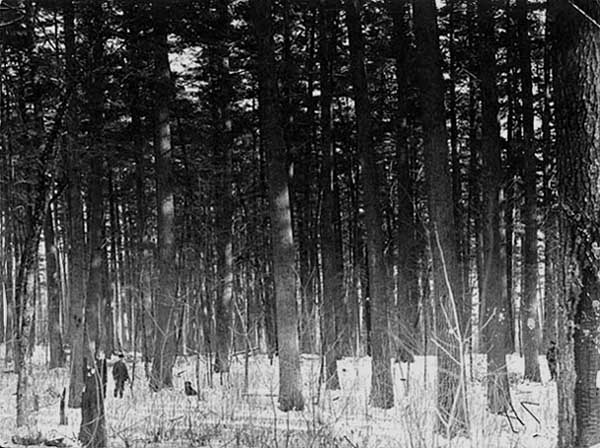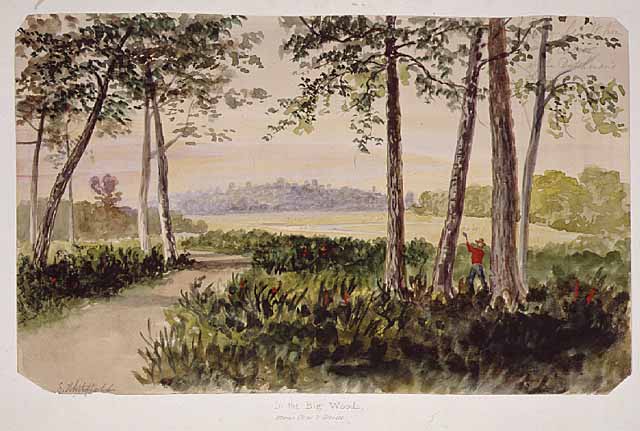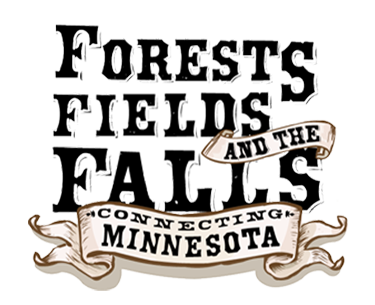What's so Great about White Pine?

Standing pines on land owned by Gore & Stinson lumber company, Cumberland, Wisconsin, 1901.
Minnesota Historical Society Photograph Collection, Location # SC p16
"No wood has served more usefully in America than has the white pine. Its abundance, cheapness, and varied usefulness made it an important factor in the westward movement. It furnished the early settler with shelter. The logs for the cabin, the shakes for the roof, and the puncheons for the floor all came from the white pine. It also provided the incoming settler with implements, furniture, fences—all of them necessities in a new country."
—History of the White Pine Industry in Minnesota
Agnes M. Larson, History of the White Pine Industry in Minnesota (Minneapolis: University of Minnesota Press, 1949).
What about Other Kinds of Trees?

"In the Big Woods, between Carver and Glencoe" (1856-1859)
Painted by Edwin Whitefield (1816-1892)
Minnesota Historical Society Art Collection, Location #AV1995.141.48
"The great forest was of two general types: the hardwood forests, known generally in Minnesota as the 'Big Woods,' and the 'pineries,' sometimes called the 'North Woods.'
"The Big Woods consisted of hardwoods.... There were large stands of maple, basswood, elm, ash, butternut, black walnut, and other broad-leafed species mixed with the prevailing oak. In the development of Minnesota these hard forests counted for little. It was the rich soil in which they grew that was attractive to the settler. So the strong oaks, the stately butternuts, and the queenly maples were felled merely to be cast into the fire so that wheat could grow where once they had stood."
—History of the White Pine Industry in Minnesota
Agnes M. Larson, History of the White Pine Industry in Minnesota (Minneapolis: University of Minnesota Press, 1949).

